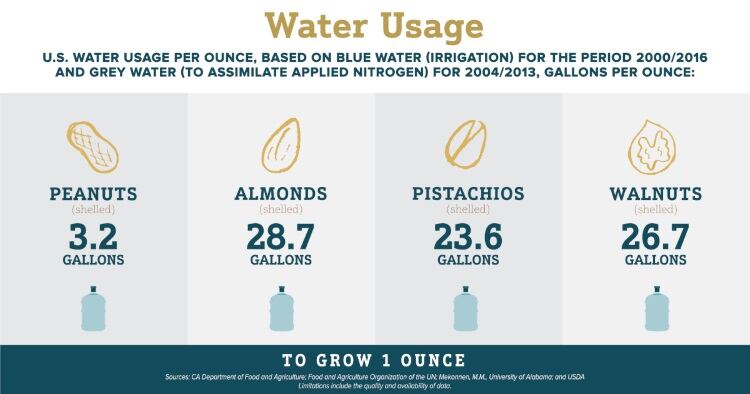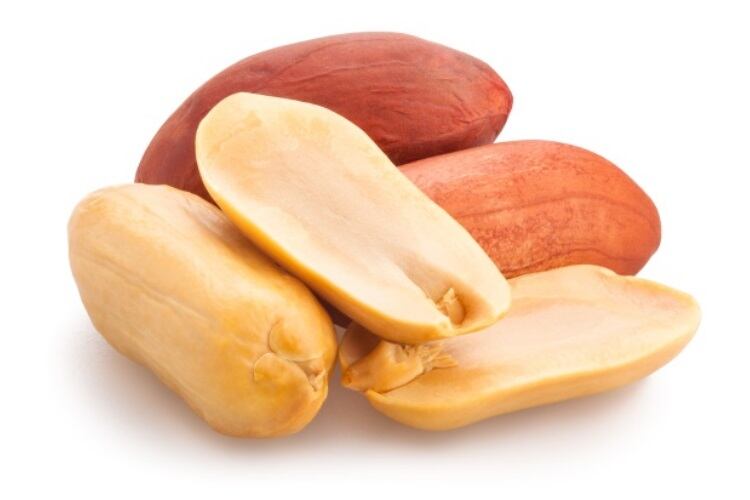America’s peanut farmers are celebrating an unprecedented level of per capita peanut consumption, topping the previous record level of 7.6 pounds (3.4kg) per America in 2020.
“People may be surprised to learn that peanut consumption was at an all-time high during the pandemic, but after more thought, it makes sense,” said Bob Parker, NPB president and CEO.
“We would never wish for business growth under these circumstances; however, we take pride that peanuts have helped people meet their nutritional, convenience, financial and even emotional needs during stressful and hectic times.”
Driving awareness of peanuts and consumption through consumer marketing is the cornerstone of NPB’s mission – and by all accounts, it’s an effortless task.
A better-for-you snack; a nutrition powerhouse used to combat food insecurity; linked to the same heart and longevity benefits as its pricier cousins; an economically viable crop for farmers and future generations; and brilliant sustainability credentials. What’s not to love?
Appealing to our toughest critics
Long before official reports sounded a ‘code red’ for the environment, Parker said peanut farmers were taking extra steps to care for the land as they knew it was key to being able to farm well into the future.
“They want to leave the farm to their children, so investing in conservation research and sustainable practices means investing in their future and their children’s.
“However, as evident by the world around us and recent news, the stakes are getting higher. And as an industry, we have an opportunity to be a part of the sustainability solution and an obligation to continue finding ways to be even more environmentally friendly.”
“Today more than ever, consumers are eager to know where their products come from and their environmental impact.”
This places a greater responsibility on brands to demonstrate that they have taken up the cudgel.
“According to a Havas Group Worldwide study, two in three consumers believe brands have as much responsibility as governments in driving social change like sustainability,” said Parker.
“Conversely, they don’t put the burden of environmental responsibility solely on the shoulders of the government or brands. In fact, 42% of consumers believe their choices have a significant to moderate impact on the environment, and many wish they understood more about the sustainability of products so they could make more informed decisions.”
He noted this presents a golden opportunity for the peanut industry.
Earlier this year, the American Peanut Council Sustainability Initiative created the Peanut Trust Protocol, which will set standards for more sustainably grown peanuts. Modelled on the Cotton Trust Protocol, the Protocol will publish annual data from its extensive network of peanut farmers that can be used by brands and retailers to show measurable progress towards their own sustainability pledges. The Protocol also gives farmers a platform to showcase their efforts, reporting on success stories as they evolve rather than simply when a goal is reached.
“We need to make it easier for consumers to participate in the sustainability movement and show them how consuming peanuts and peanut butter is contributing to a healthier environment.”
He added the toughest critics today are Gen Zs, most of whom consider the environment as their number one concern.
“It is no longer an option for a company to make a social impact, they expect it.”
Gen Zs are also expected to take the biggest bite out of peanut consumption, so it’s certainly not an audience to ignore. Likewise, Millennials, Gen Xs and Boomers place the environment on the top of their list of priorities.
“In fact, nearly half of US consumers [according to Nielsen] are likely to change what they buy depending on the company’s commitment to the environment, and that frame of mind isn’t changing anytime soon. Consumers are predicted to spend up to $150bn on sustainable products in 2021.”
Easy tale to tell
Said Parker, “We know consumers want to hear our industry’s sustainability story. Lucky for us, that’s an easy tale to tell, so easy in fact that we need to do a better job of remembering to do it.”
In 2018, the NPB launched Peanut Vision, a consumer-driven website that touts the fact that peanuts are perfectly poised to meet environment, health and societal challenges in a constantly evolving world.
Peanuts are coined as ‘nature’s zero waste plant’, with everything from its roots to the hulls being used in one form or another. Pelletized peanuts made from the peanut hulls are used for animal feed and fuel; peanut ‘hay’ made from the vines is used as food for cattle or as ground cover or to cut back into the land to enrich the soil. Scientists are also delving into the extended use of peanut skins, which contain high levels of antioxidants and polyphenols.
Peanuts have the smallest carbon footprint of any nut and updated water usage data by the US Department of Agriculture (USDA) found the crop uses even less water than previously thought. While 85% of the world’s water supply goes to agriculture, the peanut plant produces food with a fraction of the water that tree nuts require. For example, an ounce (28g) of peanuts requires 3.2 gallons (around 12 litres) of water, while almonds and walnuts need more than 26 gallons (almost 98 litres).

Peanut plants also have a unique ability to improve soil and benefit other crops.
“For our farmers, sustainability practices not only protect the environment, they ensure long-term economic viability for their operations. Without financial stability, there will be little to lure the next generation back to the farm,” said Parker.
The lifesaver
Peanuts have more protein than any other nut (7g per serving), contain more than 30 essential vitamins and minerals, and are a good source of fibre and good fats. It’s believed that eating peanuts can help to maintain a healthy weight, and they have been clinically proven to decrease the risk of Type 2 diabetes. Some research even concludes that frequent peanut consumption reduces the risk of death from heart disease by 29%.
Peanuts play a starring role in relieving and preventing global hunger. Malnutrition kills 5.9 million children each year, and the main treatment relies on peanuts. One such solution is Plumpy'Nut, a 92g packet of peanut-based paste manufactured by Nutriset that is used for the treatment of severe acute malnutrition. Peanut butter is also the most requested item by food banks.
The NPB has also been proactive in finding solutions to peanut allergy, estimated to affect 1%-2% of the American population. For the past two decades, the NPB has invested over $35m to food allergy research, education and outreach.
Last year, the USDA and Department of Health & Human Services (HHS) updated the Dietary Guidelines for Americans (DGAs) to include, for the first time ever, a section on infants and young children and recommended the introduction of peanut foods as early as 4-6 months to help prevent a potential allergy.
“Part of the Board’s objective is to increase consumption of peanuts,” said Andy Bell, Georgia peanut farmer and 2021 chairman of NPB.
“That can be a challenge when peanuts are already the most popular and preferred nut. But through creative promotions, exports and new products, things are good in the peanut industry and we keep reaching new heights.”
Challenges remain
Despite all the upsides, Parker said the industry is still facing many hurdles.
“For our farmers, sustainability practices not only protect the environment, they ensure long-term economic viability for their operations.
“Simply, we need more farmers to continue the legacy … The average age of today’s farmer is almost 58 years old [2017 Census of Agriculture] and few in the younger generations are picking up the torch … [but] without financial stability, there will be little to lure the next generation back to the farm.
“We know consumers are hungry where it comes from and who grew it. As the peanut industry continues to explore and innovate new ways to leave a positive impact on the environment, bringing the consumer along on the journey will be critical.”


